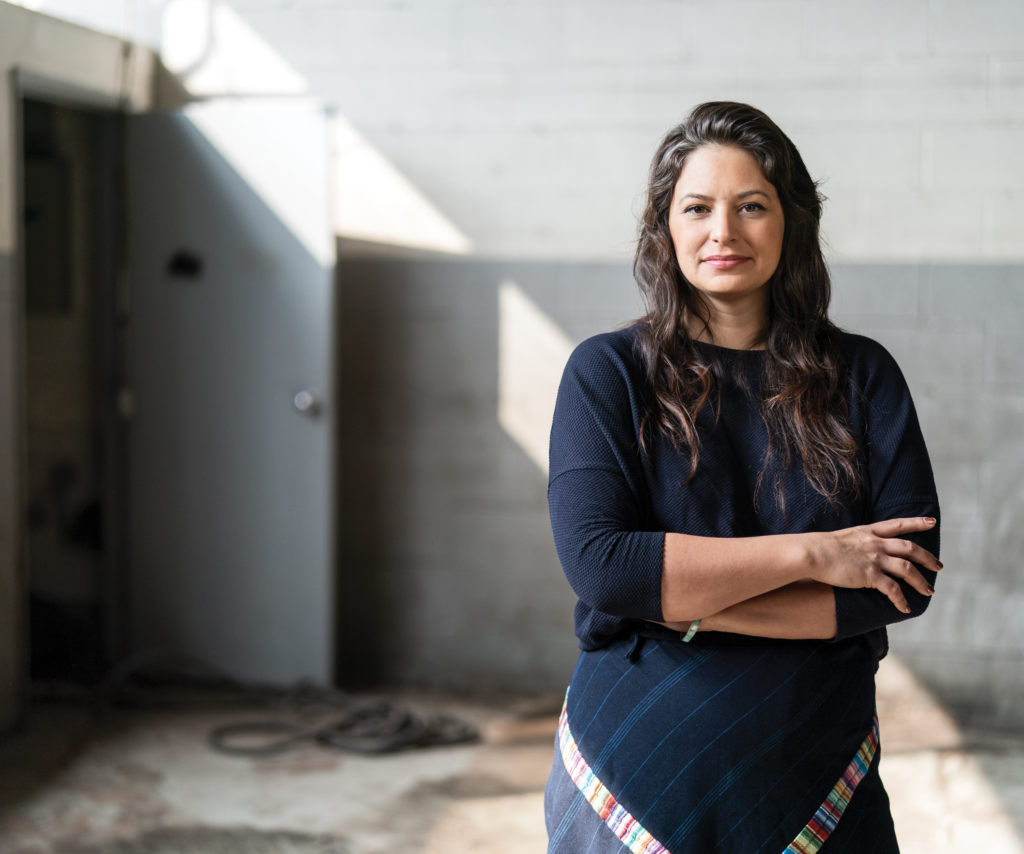[ad_1]
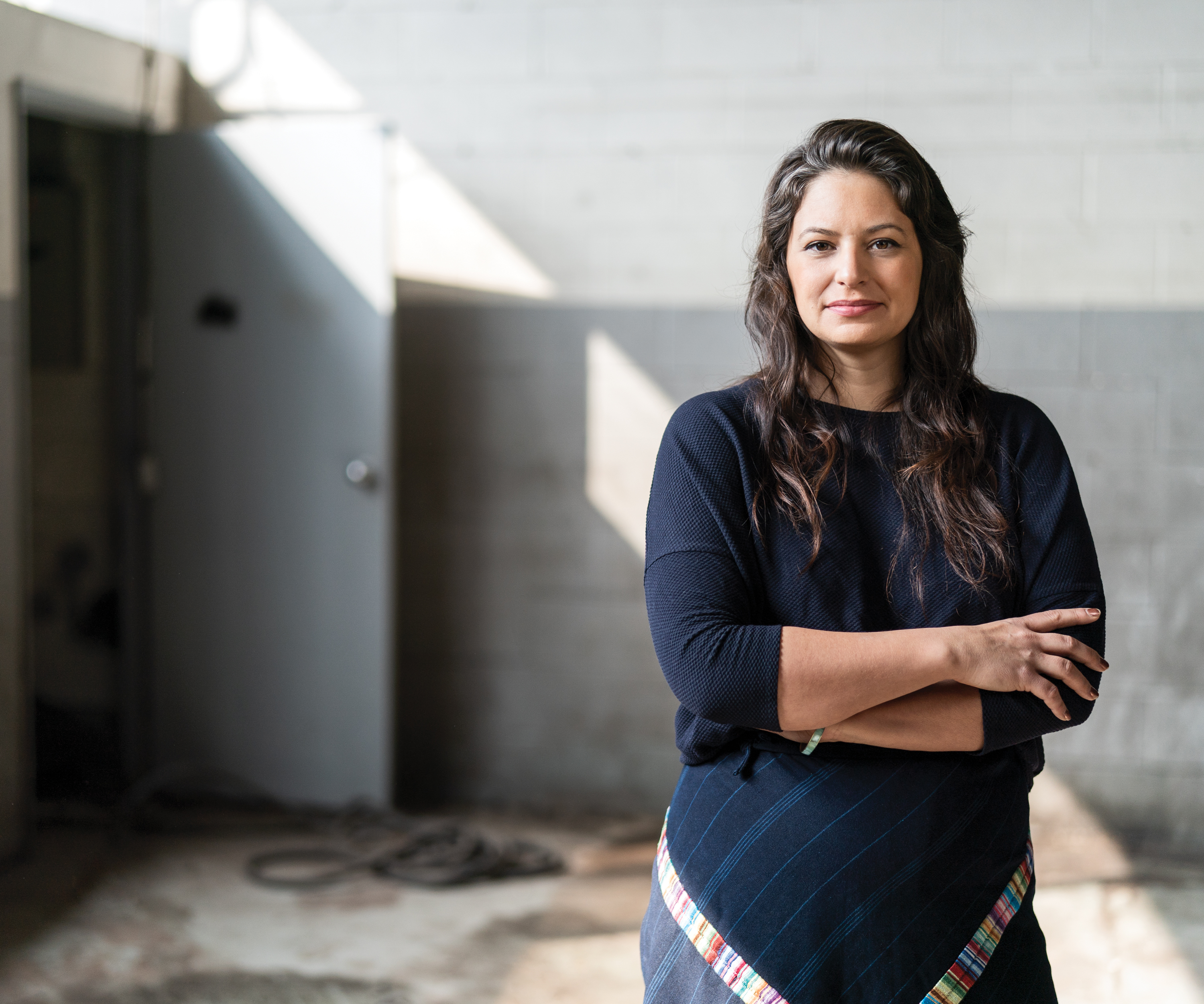
Candice Hopkins photographed in Toronto, April 2019.
ANYA CHIBIS
The independent curator Candice Hopkins recently moved back to Canada, where she was born, from New Mexico, her base for the past several years. For someone who has worked for over two decades to bring artwork by contemporary indigenous artists into the foreground of the mainstream art world, it could not have been better timing. “I feel like in Canada there is, at the moment, this space of reckoning,” she said.
In 2008 the Truth and Reconciliation Commission of Canada was established to document the history of the government-funded Canadian Indian residential school system, which between 1879 and 1996 removed some 150,000 Native Canadian children from their families and communities and, in the name of assimilation, placed them in often abusive boarding schools. This practice and its devastating effects are part of Hopkins’s own family history. She was born in the Yukon, in northwestern Canada, and is a citizen of the Carcross/Tagish First Nation. Her grandmother, who died last year, was one of those sent to a residential school and it wasn’t until late in life, after she had received reparations as part of the Commission, that she began telling stories of that past.
Hopkins believes that it was trauma that silenced her grandmother for so long, and there is no doubt that Canada’s program of forced assimilation created, as Hopkins wrote in 2017, “a breakdown so profound that the horrors of the past not only go unspoken but remain incomprehensible as well, even when their effects are acutely felt in the present.” Part of the work of the Commission—whose final report, made in 2015, described the system as “cultural genocide”—was to collect the stories of survivors like Hopkins’s grandmother, many of whom were sharing them for the first time. Their forced assimilation served its purpose, stifling traditional knowledge that would otherwise have been passed down over generations.
On a chilly Sunday morning this past March inside the Met Breuer, a drawing of an angel blowing into a wind instrument by Siah Armajani prompted a memory for Hopkins, in New York for a panel. “Where we’re from, the land is considered a mnemonic device,” she told me. “There were certain markers in the land that when you got to those markers, you were meant to sing, and embedded in the song is all the knowledge you need to know about that part of the landscape.” Orally transmitted folklore such as this has slowly become, if not lost, increasingly less accessible.
[See the Table of Contents for the Summer 2019 edition of ARTnews: “Reshaping the American Museum.”]
The question that has long been central to Hopkins’s curatorial process is, “How can we open up a space again to other voices?” As more and more arts institutions race to present the work of contemporary indigenous artists, this question has become more urgent than ever. For Hopkins, it’s important to understand that artists can speak for themselves. “In art we have these very bad tendencies to represent the ‘other,’ ” she said. “We can still have more complicated discussions about identity, but, in order to have them, we have to confront that. It’s more of a deeper question of who’s representing whom and who’s speaking for whom.”
Hopkins sees curating itself as a “space of listening,” she said. As she wrote in an essay for last year’s SITElines, a biennial in Santa Fe, New Mexico, for which she was co-curator, art “allows us to hear in moments of silence, to open our ears rather than to close them.” It’s a belief that has shaped the trajectory of her career.
In 2016, as part of the run-up to 2017’s Documenta 14 in Kassel, Germany, and Athens, Greece, Hopkins co-organized the School of Listening, a summer intensive program in Kassel for students from both cities. Over the course of ten days, contributors to the quinquennial exhibition discussed what part listening played in their respective fields.
“Within art, we put so much emphasis on what we see, but so much of what we see isn’t what we experience,” Hopkins said. The School of Listening was an attempt “to create a radical disjuncture between all of the capital put on what we can see and instead think about what we can or cannot hear.”
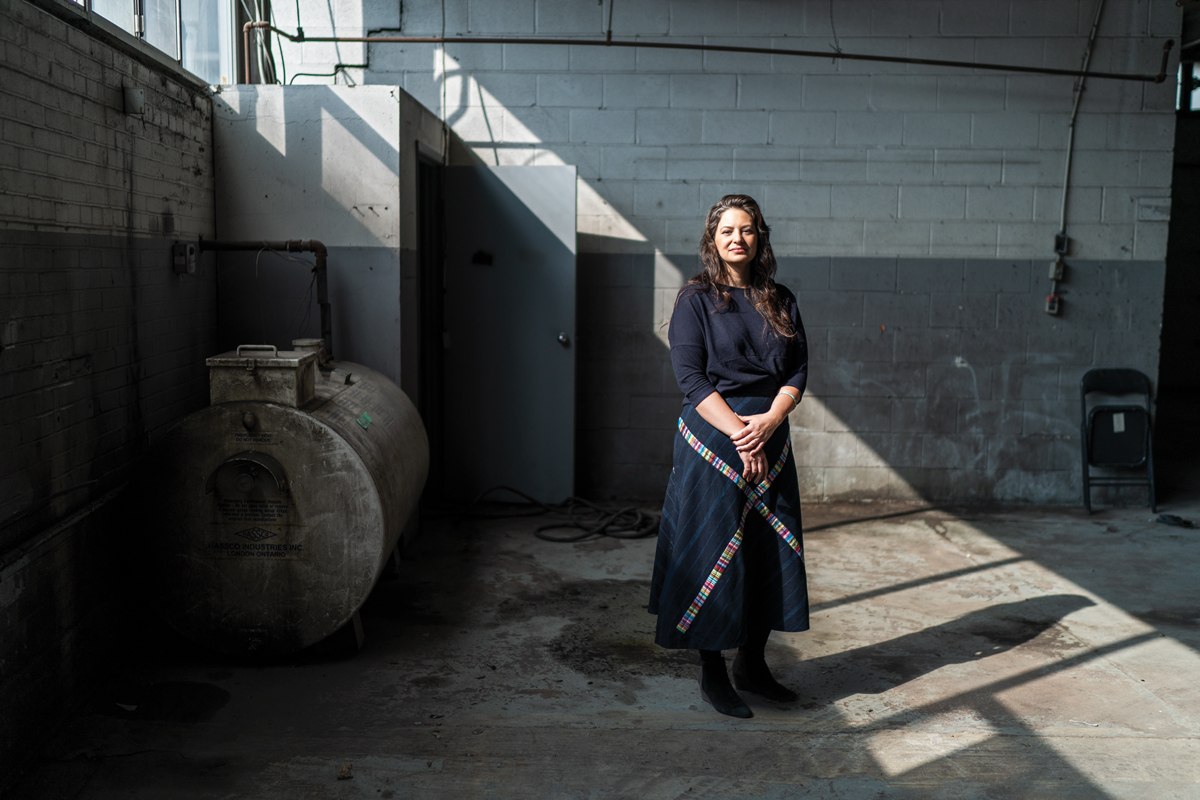
Candice Hopkins in a former car dealership near the Toronto waterfront that will be one of the main venues for the city’s new biennial opening in September.
ANYA CHIBIS
This coming September, as senior curator of the first Toronto Biennial of Art, Hopkins will have her biggest opportunity yet to expand on the topic of listening—and how that might change how we relate to the earth.
Toronto lies along the northwestern edge of Lake Ontario, and the city’s geography serves as the starting point for the Biennial. For years, access to the water has been impeded by such man-made interventions as the Gardiner Expressway, which runs for some seven miles along the shoreline. Add to that the breweries and canneries that have historically dumped waste into the nearby Don River and you get, as Hopkins is fond of saying, “a city with its back to the water.”
In what is often called the most diverse city in the world, the Toronto Biennial will take up residence along the waterfront and will embed a specific local context—the history of the area’s indigenous peoples, as well as that of its settlers and immigrants—within the larger discourse of the contemporary art world. The aim of the Toronto Biennial, said deputy director and director of programs Ilana Shamoon, is to “engage in global conversations that we Canadians are leading in many ways—around truth and reconciliation, around inclusion more broadly.”
In tandem with her research into how the Biennial could take shape, Shamoon commissioned performance artist Ange Loft (Kahnawake Mohawk) to create the Toronto Indigenous Context Brief, a document that charts 1,000 years activity of indigenous communities along the waterfront. When Hopkins and fellow Biennial curator Tairone Bastien approached artists about participating, they gave them Loft’s Brief, and listened to the artists’ reactions.
“Candice listens, and most importantly does not categorize and dissect one’s practice which is in constant movement as it responds to life. Western curators have been forever trained in the system of categories, so it is far more difficult for them to listen without putting the artist in a box,” artist Maria Thereza Alves said from Toronto Island, where she is conducting research as part of her participation in the Biennial.
Hopkins was born in Whitehorse, the capital of and only city in the Yukon. Almost 300 miles southeast of the Alaska border, Whitehorse is the top corner of a triangle formed with Carcross (a portmanteau of Caribou Crossing) and Teslin, two villages where several of Hopkins’s relatives still live. The gold rush brought 100,000 gold miners to the remote Klondike region in the Yukon in the late 1890s, and Hopkins can trace her family’s history to that era—when, as she describes in an essay in the Documenta 14 Reader, “capitalist greed and desire transformed everything and everyone in its path.”
During her childhood, Hopkins’s father, a truck driver in the logging industry, moved the family south, to a remote area in northern British Columbia called Fort St. John along the Alaska Highway. Hopkins returned there after college in Calgary, where she studied art, and started working at the local Friendship Centre, a cultural space for urban indigenous people.
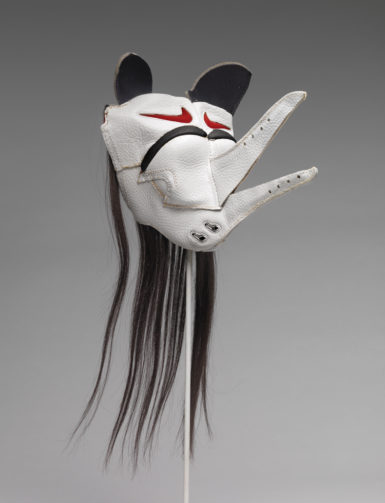
Brian Jungen, Prototype for a New Understanding #2, 1998, which appeared in “Art for a New Understanding: Native Voices, 1950s to Now,” at Crystal Bridges Museum of American Art.
© BRIAN JUNGEN/TREVOR MILLS, VANCOUVER ART GALLERY
One day, the Friendship Centre received a fax about internships in the South Pacific for indigenous youth. Hopkins applied for one in Fiji “because that sounded like the best place in the world if you’re a kid in northern British Columbia and you’ve never even been to the ocean.” Her internship focused on recovering local indigenous knowledge of traditional medicine that had been outlawed, though kept alive in the community, under British colonial rule. She wondered afterward how she might apply that process of knowledge reclamation to the art world—not through a historic, anthropological lens, but with contemporary indigenous artists.
From Fiji, she applied to the master’s program at the Center for Curatorial Studies at Bard College, in Upstate New York. Back in Fort St. John and before heading to graduate school, she worked for the Treaty 8 Tribal Association. She curated a small exhibition there that presented a range of local indigenous art forms. Shown along with historical documents from the association’s archives and musical performances were ceremonial masks made from Nike Air Jordans by Brian Jungen, an artist of Swiss and Dane-Zaa ancestry, and a light box that Hopkins made herself.
Among her mentors at CCS Bard in the early 2000s were luminaries like Marcia Tucker and David Levi Strauss. “Until I went to Bard, I didn’t really understand how my experiences lent themselves to curatorial practice,” she said.
In 2009, after a four-year stint as director and curator of exhibitions at the artist-founded Western Front in Vancouver, Hopkins was offered a curatorial residency focusing on indigenous art at the National Gallery of Canada in Ottawa. She also began collaborating with Steve Loft, Lee-Ann Martin, and Jenny Western, all curators of indigenous descent, on the multi-venue “Close Encounters: The Next 500 Years,” organized to celebrate Winnipeg, which has Canada’s largest indigenous population, as the Cultural Capital of Canada for 2010.
“Close Encounters” looked to change the way work by indigenous artists is presented and discussed. Rather than “freezing us in the past,” as the curators wrote in the introduction to the exhibition catalogue, the show presented work by indigenous artists from around the world who draw from a wide range of sources, methods, and materials—both traditional and nontraditional—to make art that looks to the future. Among those included were Alves, Jungen, Rebecca Belmore, Jeffrey Gibson, Faye HeavyShield, James Luna, Tracey Moffatt, Kent Monkman, Postcommodity, and Lawrence Paul Yuxweluptun.
With Greg Hill and Christine Lalonde, Hopkins curated the 2013 exhibition at the National Gallery of Canada, “Sakahàn: International Indigenous Art,” which brought together work by more than 80 international indigenous artists from the U.S., Canada, Australia, and New Zealand, as well as Japan, Taiwan, India, and Finland. When the show opened, the museum’s then director, Marc Mayer, acknowledged that the institution sits on unceded Algonquin land, a practice that has now become common in Canada post–Truth and Reconciliation.

Rebecca Belmore, The Blanket (still), 2011, was included in “Close Encounters: The Next 500 Years,” Winnipeg.
COURTESY THE ARTIST
For Jackson Polys (Tlingit), a member of the artist collective the New Red Order, “Sakahàn” was a watershed for indigenous art. “The danger was that [the show] would essentialize the indigenous and then reify assumptions that indigenous art is counter to contemporary art,” said Polys, whose group—a self-described “public secret society” that acknowledges indigenous histories while calling into question definitions of indigeneity—will participate in the Toronto Biennial. Instead, the “Sakahàn” show was a “huge push to counter the false separation between the indigenous and the contemporary. It expanded the possibilities of what indigenous could be and provoked the question: What constitutes indigenous art? For me, this is an open question.”
Polys wasn’t the only one impressed by “Sakahàn.” Irene Hofmann, director of SITE Santa Fe, followed it from afar, and in 2012 invited Hopkins to be part of a closed-door symposium to explore how SITE’s well-regarded international biennial could be reframed. The result was the launch, in 2014, of SITElines, which looked to explore arts from throughout the Americas, particularly the northern and southern reaches.
Hofmann then invited Hopkins, who had recently moved to New Mexico, to serve on the SITElines curatorial team. Hopkins, who was instrumental in ensuring that contemporary Native artists were core to the project, proudly said that SITElines has “managed to show more brown and indigenous artists than any other biennial in the U.S.”
Meanwhile, Hopkins was still working in Canada. What got Shamoon interested in her work was Hopkins’s involvement with Indigenous Art Park in Edmonton, Alberta. In 2015, 16 indigenous artists were shortlisted to engage in dialogue there with local Native elders in order to create proposals for work in a public park, which would permanently exhibit pieces by Canadian indigenous artists. The six commissioned works thus became a mixture of the artists’ and the community’s vision. Jerry Whitehead (Cree) created mosaic shells for turtles that reference “Turtle Bay,” the indigenous name for the continent of North America. “When you think of the land in that way, as a living being, as an organism, as a body,” Hopkins said at the time, “it makes you relate to the land differently. You respect it differently. You might even stand or step on it differently.”
The following year, Adam Szymczyk, curator of the 14th edition of Documenta, brought Hopkins on board as a curatorial adviser for the exhibition. A few months later she became part of the core curatorial team and relocated to Europe to work on the portion of the show in Athens. “I instinctively knew this is someone I wanted to work with,” Szymczyk said. He was particularly interested in bringing curators “who could speak on their own and from their experience. I wouldn’t want to be someone who represents other people.”
Szymczyk added that how indigenous artists are included in international exhibitions “is a key question that should be addressed” so as to avoid “the objectification of the work and the authors of the work.”
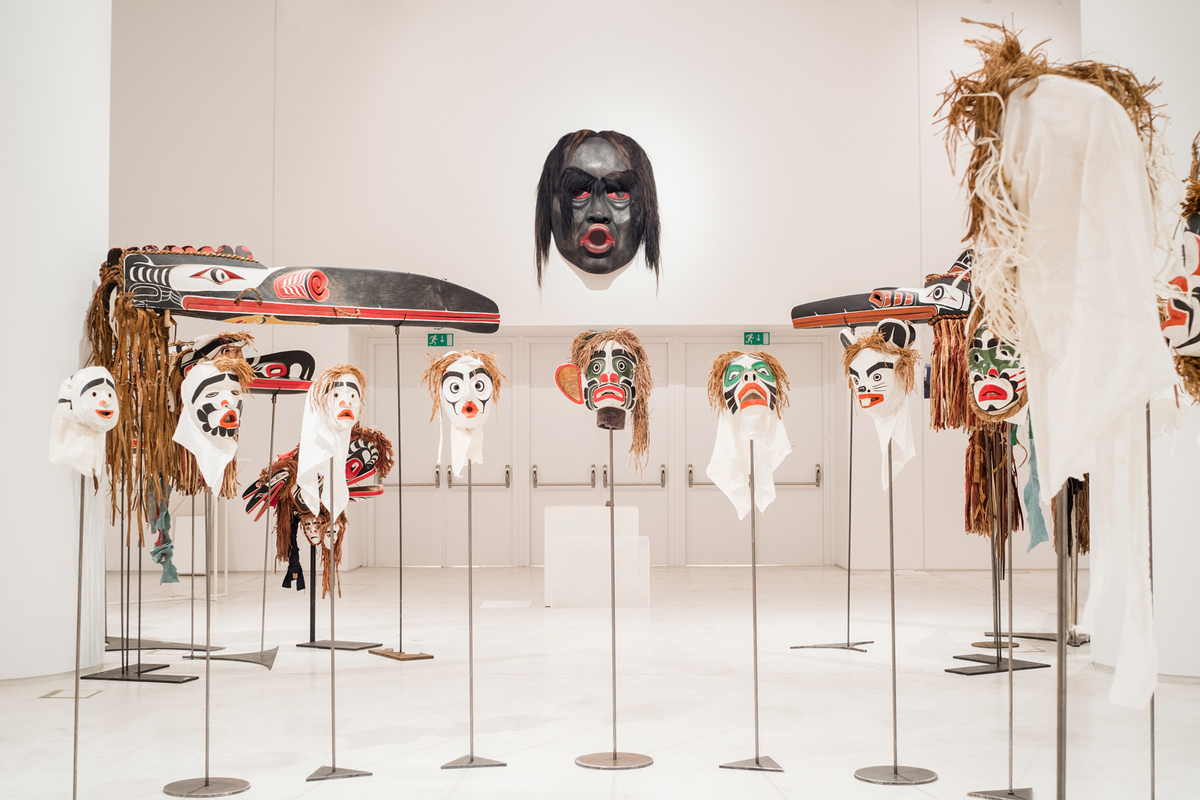
Twenty-two masks from Beau Dick’s ”Atlakim” series, 1990–2012, installation view, at EMST—National Museum of Contemporary Art, Athens, Documenta 14.
MATHIAS VÖLZKE
Art historian Julia Bryan-Wilson said that a strength of the Documenta exhibition came from Hopkins’s inclusion of multiple indigenous artists, including the late Beau Dick (Dzawada’enux) and Rebecca Belmore (Anishinaabe), as well as many Sámi artists from the arctic reaches of Finland. “This is where some of the most relevant and urgent art-making is happening,” Bryan-Wilson said, noting that Hopkins’s influence on the exhibition was readily apparent.
For their contributions to Documenta, both Dick and Belmore started with Athens’s role as the birthplace of democracy—and, for many, Western civilization—and how to relate it to the specific indigenous contexts from which they were working, particularly during the height of a migrant crisis in Europe. Belmore produced a sculpture in the form of a refugee tent in marble that faced the ruins of the Acropolis.
Dick, who died days before Documenta opened, had planned to travel to Athens to speak with people who had fled their homeland. He also created a series of ceremonial Atlakim masks that were to be included in the exhibition temporarily until they would be shipped back to Canada and burned as part of a potlach ceremony in Alert Bay in British Columbia. The stands were to remain empty for the duration of Documenta to show that the masks had a life other than as objects for display and to highlight the ways in which these belongings—and indigeneity at large—are commodified. The artist’s death left these conversations and ceremonies unfinished.
“[Hopkins] is someone who is thinking so incisively and creatively about how the category of art needs to be expanded,” Bryan-Wilson, the art historian, said. “She’s been one of the most thoughtful and interesting voices, pushing the discussion forward.” Part of the discussion, as Bryan-Wilson sees it, relates to “how an art institution should be responsible to different narratives and how all these narratives are needed.”
For the most recent edition of SITElines in 2018, titled “Casa tomada,” Hopkins invited José Luis Blondet and Ruba Katrib to be co-curators. She also commissioned Hock E Aye Vi Edgar Heap of Birds (Cheyenne/Arapaho) to create a suite of 24 monoprints and 24 ghost prints; she had been working with him on another project, and saw potential in a new printmaking technique he was developing.
“Candice saw the vision of what it would look like,” Heap of Birds said of the project, which looks to reframe gun violence and mass shootings as a historical—not simply a contemporary—phenomenon. “Candice saw this huge future and then got it supported. Her seeing that and making that happen blew open this whole part of my life.”
He paused, and added, “The end game, you hope, is that First Nations women will look at her and say, ‘I want to do that.’ ”
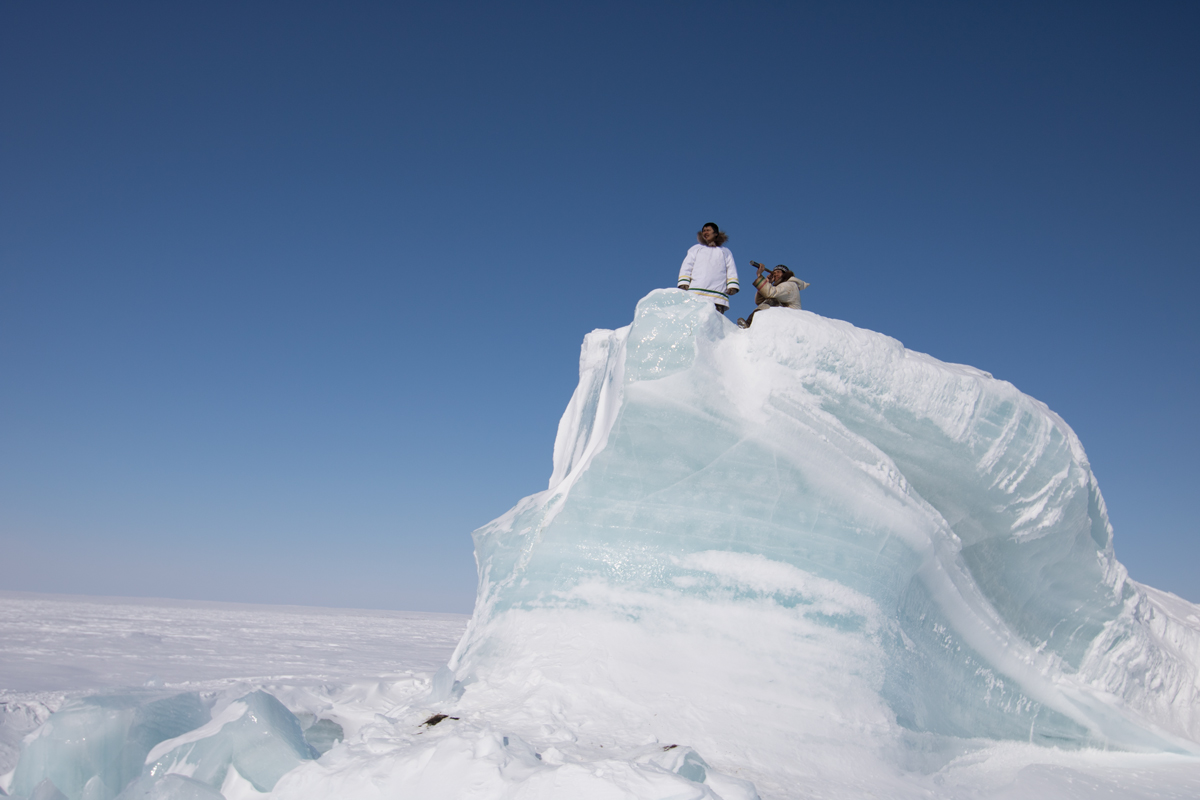
Film still from Isuma’s One Day in the Life of Noah Piugattuk, 2019, which debuted in the Canadian Pavilion at the Venice Biennale.
LEVI UTTAK/ISUMA DISTRIBUTION INTERNATIONAL
Hopkins is now one of the world’s busiest and most closely followed curators. She recently worked with Mindy N. Besaw and Manuela Well-Off-Man on the traveling exhibition “Art for a New Understanding: Native Voices, 1950s to Now,” which debuted at the Crystal Bridges Museum of American Art in Bentonville, Arkansas, last fall. That exhibition sought to demonstrate how artistic practices of contemporary Native artists have developed since the middle of the 20th century. Another ongoing traveling show, “Soundings: An Exhibition in Five Parts” (co-curated with Dylan Robinson), looks at the ways in which sound might be a tool—or a call—for decolonization.
In addition to the Toronto Biennial, she is also on the curatorial team for Canada’s pavilion at the Venice Biennale this summer, which features the Arctic-based collective Isuma, the first Inuit artists to represent Canada. Much of their video work was created and screened with an Inuit audience in mind, and looks at forced displacement of the Inuit people in the past and the impact of mining projects on their communities today. Isuma’s early films, all in the Inuktitut language, are “about what self-representation means,” Hopkins said.
Hopkins has also begun collaborating with the composer and artist Raven Chacon (Navajo/Diné), who is her husband. Their performative lectures incorporate timed silences that, Chacon said, build on their conversations about the times when indigenous people haven’t been allowed to have a voice. Chacon pointed to John Cage’s famous statement, “I have nothing to say, and I am saying it.”
“He chose to use silence as a device to speak,” Chacon said, “[but there are] times where indigenous people don’t have that privilege. They are just silenced.”
As indigenous artists increasingly speak for themselves, Hopkins said, “We actually get the art history that we’re ready for. What is clear is that ‘art’ is too limiting a category. That becomes a curatorial challenge. How do you do something different?”
A version of this story originally appeared in the Summer 2019 issue of ARTnews on page 74 under the title “The Sound of Listening.”
[ad_2]
Source link

